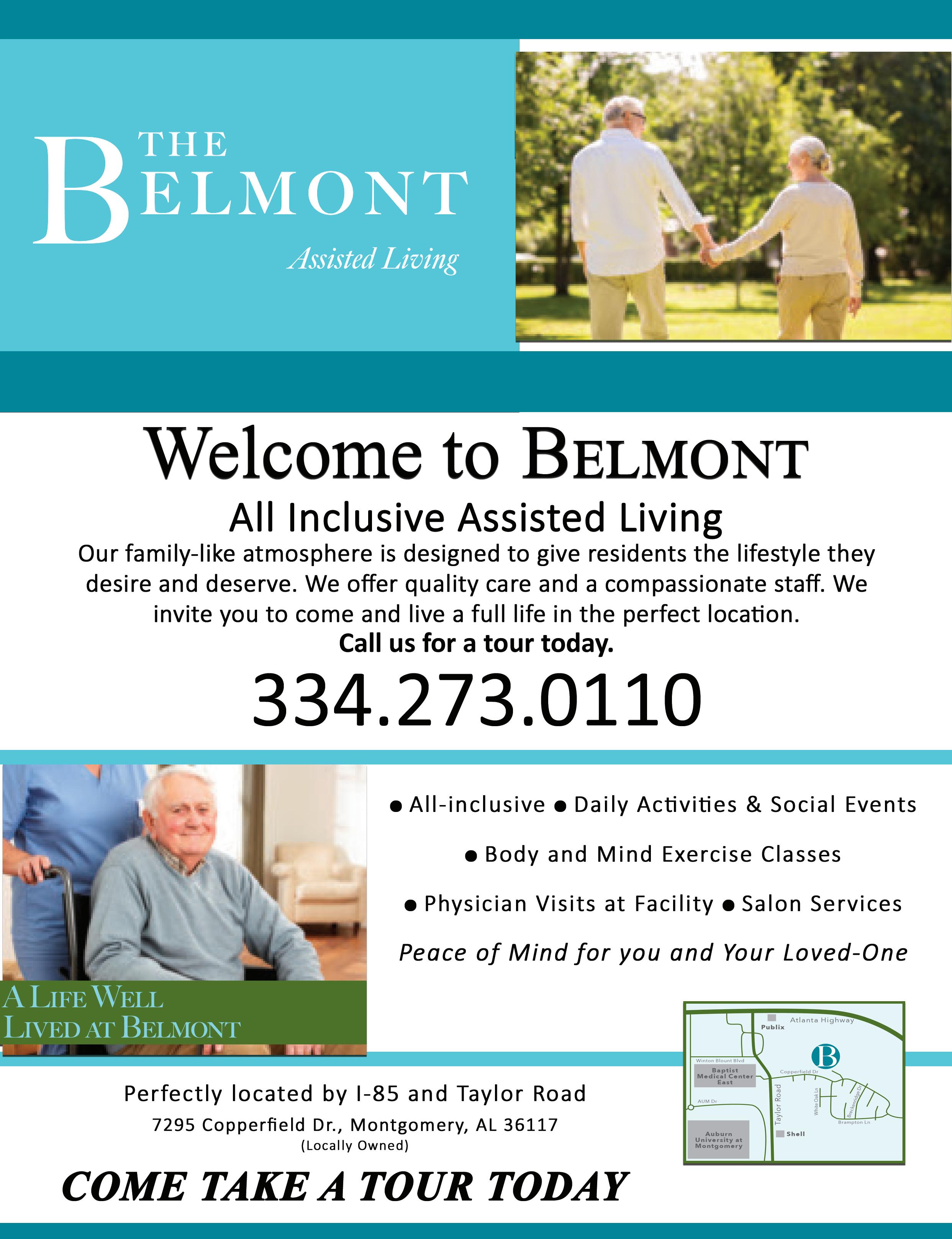
8 minute read
The Importance of Social Engagement for Healthy Aging
In Promoting Healthy Aging

While nutrition and exercise play a massive role in ensuring healthy aging, so does social engagement. Interacting with others has been clinically proven to keep our brains engaged and also enhance our mood. Research continues to show that, for seniors, social engagement leads to better physical health and reduces the risk of cognitive decline.
Geriatric medical specialists agree that social activity can help older adults improve their mental health while improving memory functions. Staying socially engaged can also reduce depression and create an overall higher quality of life for your loved one.
“Use it or lose it” is an old phrase that happens to be true. If you don’t exercise your brain, it will atrophy just like your body’s muscles do without exercise. Socializing is an excellent workout for your brain, keeping it supple, alert and active.
The Importance of Social Engagement for Older Adults
Research has proven that social isolation can put seniors at greater risk. It can even lead to a greater risk of physical illness and accidents in the home.
Social interaction stimulates a hormone called oxytocin. If you want to impress people, you can explain that oxytocin is one of many neuropeptides that can generate good feelings. Often referred to as the “love hormone,” social bonding triggers the release of oxytocin. Just as endorphins can kick in with exercise, the oxytocin kicks in with social interaction.
Social activity also provides a mental workout to keep our brain engaged. Conversation requires listening, reasoning, attention, language skills, and mental processing that help keep cognitive and memory skills tuned and operational.
Social interaction and connecting with others can also boost an older adult’s mood by improving energy levels and sense of self-worth. Your loved one may need to feel that they are heard and appreciated. As we age, we often feel we’ve become “invisible” no matter how successful and recognized we might have been in earlier life.
We live in a society that overlooks our elderly population no matter how accomplished they may be. Social interaction can help counter the risk of depression and feelings of low selfesteem.
Even before the COVID-19 global pandemic arrived, experts knew that loneliness and isolation could have a negative impact on our mental health, especially for seniors. Longtime friends move away or pass away. We move away from long-time homes to downsize. As children and grandchildren grow and move away, families may become widespread. Mobility and/or hearing issues may also make socializing more of a challenge. It’s easy to socially isolate and not realize the consequences until it’s too late.
9 Ways to Promote Social Activities for Seniors

Even in extreme circumstances during a worldwide health crisis – shelter in place orders and social distancing – there are many ways for everyone, including older adults, to stay socially engaged. 1. Utilize online communication. Help seniors use technology such as FaceTime and Zoom. Technology today allows us to be in constant contact with family and friends, whether near or far. Not only can we hear them, but we can also see them and experience the environment that surrounds them.
2. Online games. In addition to phone calls, chat rooms, and email messages, there are dozens of games to play online with others. “Words with Friends” is a popular version of online Scrabble, but there are many others, including interactive card games. While this doesn’t provide “live” social engagement, it provides connection with others and has the dual benefit of keeping the brain’s cognitive skills sharp.
3. Group activities. Book clubs, winetastings, cooking classes are also going virtual. All of these offer “distance” 4. Exercise classes. Group exercise, TaiChi, and yoga classes are also available online. They should be encouraged as they include a social element and are a great way to keep your body and mind activated.
As we ease back into normalcy postpandemic, there are even more ways seniors can stay social and engaged, ensuring healthy longevity. Here are a few other social activities for older adults that may be available with a few restrictions:
5. Enroll in a class. Whether it’s at a local college or a course offered by a recreation center or senior organization, there are usually many local adult education classes available. You can learn a new skill (playing guitar) or hone an existing skill (speaking a foreign language).
6. Join others for outdoor activities. Get outdoors into the fresh air together — 7. Dancing. Dancing is great for seniors and works the mind, body, and spirit. It‘s exercise, hand-eye coordination, social and FUN!
8. Get involved or volunteer with local organizations. Again, there are likely many options: your church, local animal shelter, the library, elementary schools.
9. Follow your passion. Do something you love but do it with others. Knitting, crafting, woodworking, or painting? Put together a group of people who share your interest and do it together from a distance!
We don’t want to lose “social capital” as we age. Being a “social senior” clearly has long-term health benefits. Make an effort to stay in touch with family, friends, neighbors, and colleagues. Connect socially with others, whether in person or remotely, via the many different virtual tools available today.



By Michelle R. Negro
Hope for the Future


I just finished digging various small holes in my yard. My cats kept me company. I know, it sounds like I have completely lost my mind, yet there was a purpose. Part of that purpose is to prevent my losing my mind with everything that is going on in the world right now. I cannot control it. I am sick of hearing about it. I need something constructive to occupy myself, keep my mind functioning and force myself outside. I rather wish the various small holes were to find lost treasure, but it was for the more mundane purpose of collecting a soil sample.
I have spent many hours this past year staring at my yard (that whole stay at home thing). My yard needs work. My husband is not keen on paying someone to landscape and my half- hearted efforts. And admittedly near total ignorance of planting/yard maintenance has led me to the drastic decision to sign up for the Master Gardener’s Class through the Alabama Extension Agency. I do not believe they know what they are getting into with me as a student. I am certain I do not know what I am getting into as I stare at the book for this new Master Gardener’s Class, about the size I imagine the NY City phone book would be if they printed them anymore.
My earliest memories of yard work and gardening were of trying to avoid them. Since I was often sent back out to the garden repeatedly as I missed half the tomatoes or endless green beans. I dreaded the hundred-degree heat in the kitchen and the smell of tomatoes as my mom canned, and my siblings and I ground the tomatoes through a sieve. Admittedly, the pasta sauce she made was delicious, and her green beans to this day are far better than anything in the store. I just was not interested in the work that went with them.
As an adult,
something terrible happened. I discovered that once I was forced, kicking and screaming into the yard (for fear that the neighbors would call someone if I did not do something), I enjoyed the results. I may even have enjoyed the process of physical labor, the fresh air and the flowers and fresh herbs. Please do not tell my husband, he will have expectations. I find myself now, daydreaming of our pool having actual landscaping around it as opposed to some cheap plastic pots filled with plants in various stages of, let’s just say, various stages. Thus, I have embarked on this course that I hope will improve my future and my yard. No more half-hearted efforts. No more shove it in the ground and hope. So far, I have started nagging my husband not to bag and curb the leaves (great for compost and mulch). I have learned why all those twigs I ordered through those seed catalogues, did not last a whole year. You really do need to follow the planting instructions. I should have soaked them thoroughly, dug the hole deep enough, and even more importantly, wide enough (twice as wide as the roots), spread the roots out, backfilled, tamped, watered, finished back filling and mulched. As opposed to the one year when the weather was bad, I was busy with work and just cut slits in the soil and shoved the tree in……
Yes, this will be a long process. But with one step, signing up for the course, and another step, and so on, I can now do more than dream about finding treasure in my yard, I can one day, create it.
Michelle R. Negro, an intern in the 2021 Master Gardener Class, lives in Montgomery. For more information on becoming a master gardener, visit www. capcitymga.org or email capcitymag@
gmail.com.

READ IT - LOVE IT - SHARE IT
BOOM! starts conversations and shares stories. Share your business with BOOM! readers. For more information call/text 334.324.3472 or visit www.riverregionboom.com






